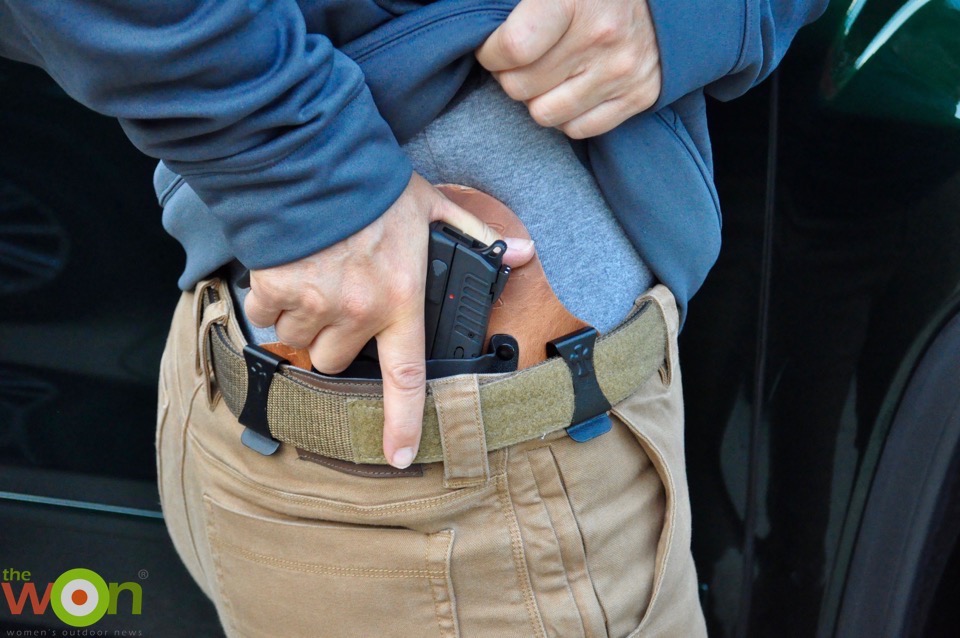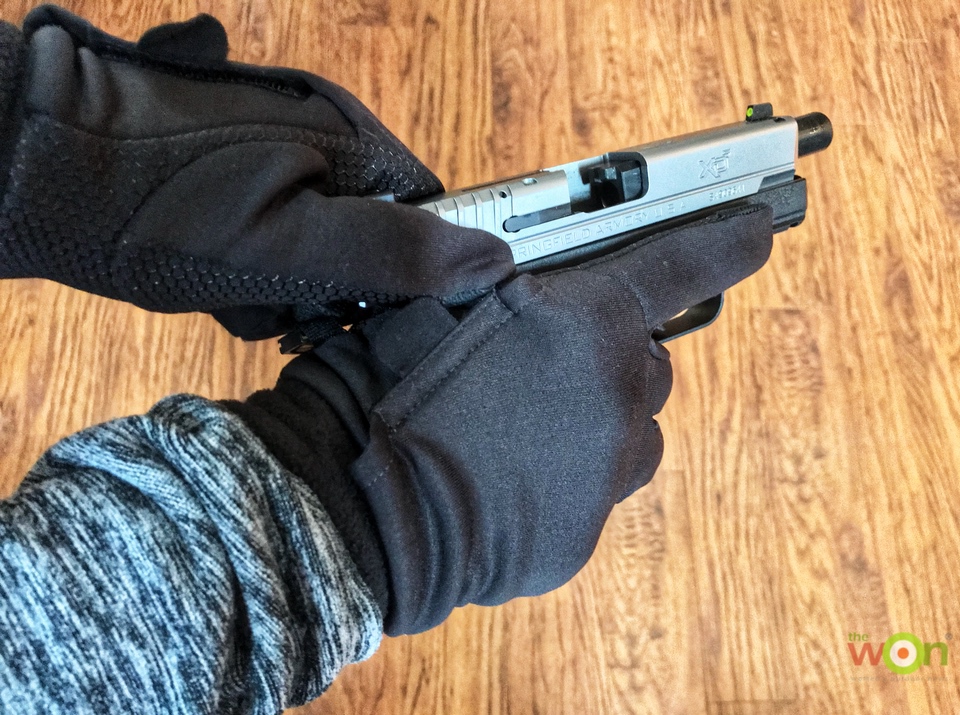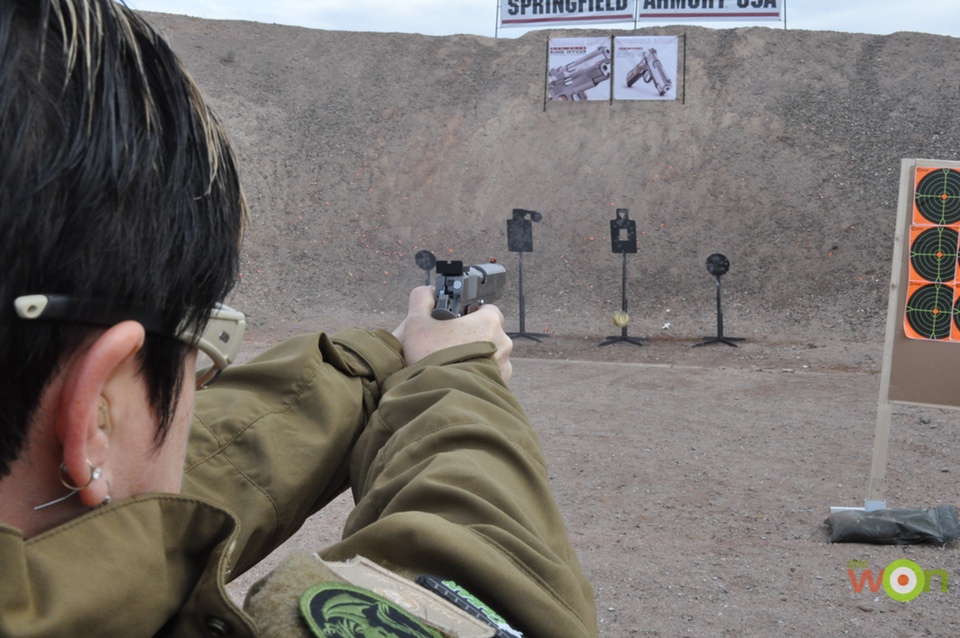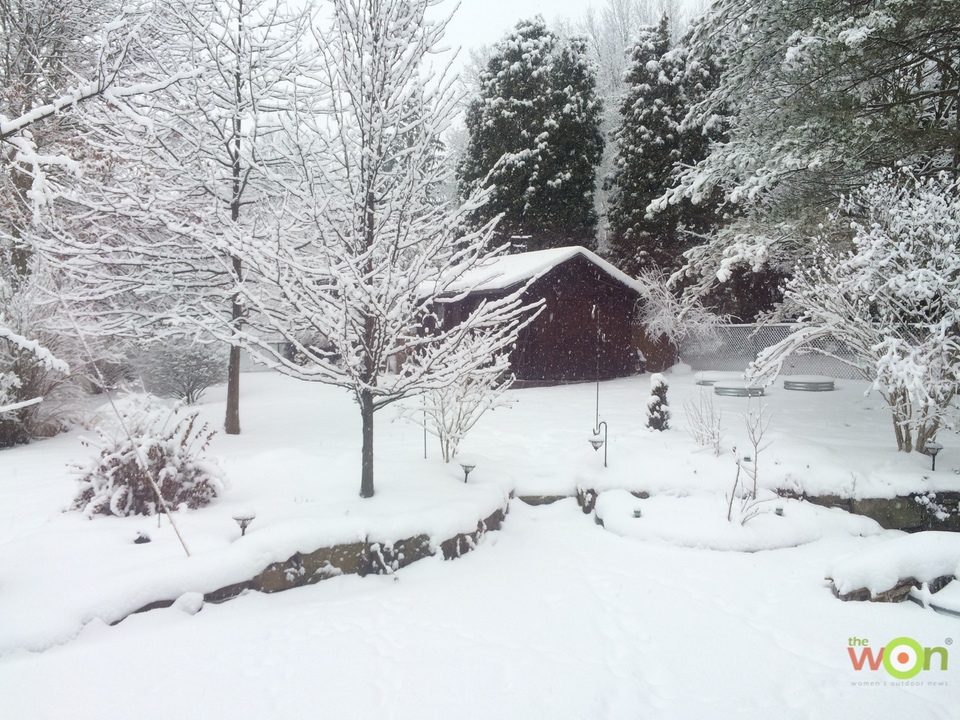I live in northeastern Ohio, where the weather eventually turns brutally cold. On a positive note, the cold weather makes on-body, everyday carry (EDC) much simpler. Those thick sweaters and bulky layers allow for easier concealment of both the firearm and other gear. Plus, if you want, you can carry a larger gun, larger calibers or a larger capacity magazine. Making these changes, however, means you’ll also need to change your training.
Gear Up is sponsored by Springfield Armory
You should know how to shoot already, so stay inside, keep warm and dry practice. Dress yourself in clothing you might wear on an average day. Double- and triple-check that your pistol is unloaded, then put it into its holster. Now practice your draw and presentation. It’s not quite the same as it is with summer clothing, is it? Clearing clothing with a few more layers takes some extra effort and practice. When you clear your cover garments, you need to make sure not to miss a layer. I’ve grabbed a handful of shirt before, and it really slows you down. What’s the solution? Time on task: Practice, practice, and then practice some more.

When carrying concealed, Michelle’s support hand has to move first to clear my cover garment.
Knowing what your support hand is going to be doing before you draw is helpful. When carrying concealed, my support hand has to move first to clear my cover garment. Most people tell you never to hold anything in your strong hand so you can access your gun faster. Well, my strong hand has time to drop the object while my support hand moves to clear. And you need to move with purpose and violence, or extreme effort, when clearing a cover garment. You may have to commit to tearing your clothing or jacket when a real confrontation occurs.
Extra magazines are pretty much standard and necessary these days, and they can serve more purpose than the ammo they provide. You do carry an extra mag, don’t you? Sweeping a jacket back is easier with the weight of a magazine in the pocket. Winter pants and pockets are different too. Think about where your spare mag will be kept. Practice your reloads until they become familiar. They may never become smooth, but eventually your speed will increase.
Now take it a step further. Try dry practice with a heavy coat on, and zip it up. Consider how you’re going to clear your garment now. You might need to consider changing the way you carry, or which firearm you carry. You might find that this is the time to carry two guns. I’ve done it: One on my body, and a revolver in the pocket of my outer layer coat. You can shoot though your pocket if necessary. Thinking about all of this in the comfort of your home can breed confidence on the streets.

One last thing before you head to the range: gloves. If you wear gloves when you carry, you should practice with gloves on. You lose a degree of touch sensation while wearing gloves. Try drawing from the holster, manipulating the safety and even reloading in gloves. If you can’t do these things with your gloves on, you might need a different style of glove. Look into wearing something thinner, or even a glove with a rubberized grip that keeps it from slipping.
As your clothing changes to match the weather, take time out to think it through and dry practice. Then, when your movements and manipulations are mapped out, it’s time to head to the range.

Practice on the range with your heavy coat. Drawing from concealment is more involved when there are layers.
If you have the opportunity to shoot at an outdoor range in cold weather, do it. Shooting in adverse weather conditions will show you how your skills are affected. Cold hands lose dexterity, and gloves can make it worse. I found out that although my accuracy doesn’t suffer, my speed does. Be sure you’re using the safety (if your gun has one), and perform magazine changes/reloads and work the slide. Your entire practice doesn’t have to be done with gloves, so split it up. If at any time you begin losing confidence in your ability to safely shoot, it’s time to slow down or stop. Don’t take the chance of having an accident on the range.

When the weather outside is frightful stay warm indoors and dry practice.
Dry practice is an essential part of any firearms training routine. When the weather makes it unbearable to be outside, or you just don’t feel like driving to the range, dry practice is a valid option—and it’s free.
If you live in the north like me, you know how cold even indoor ranges can be. The constant exchange of air to remove lead brings the outside inside. It makes it easy to practice in heavy clothing.
In case of an incident, you can’t depend on rising to the occasion. You will default to your level of training, so take some time to hit the high spots of winter carry. Dry practice will build your motor programs, visualization and mental rehearsal will take your mind into the fight, and live fire training at the range will verify your skills and test your ability.
Michelle Cerino, aka Princess Gunslinger, first entered the firearms industry in 2011 as co-owner, president and trainer at a national training company. She immediately began competing in both 3-Gun and NRA Action Pistol, becoming a sponsored shooter. Michelle is currently a columnist and Managing Editor of Women’s Outdoor News, as well as owner of Pervenio LLC. She also manages social media for Vera Koo and FASTER Saves Lives. Michelle encourages others to step out of the comforts of home and explore. View all posts by Michelle Cerino